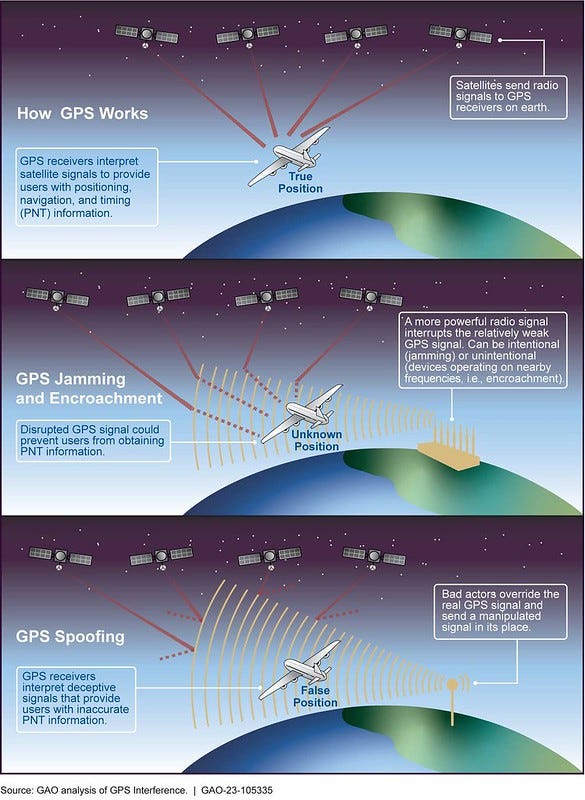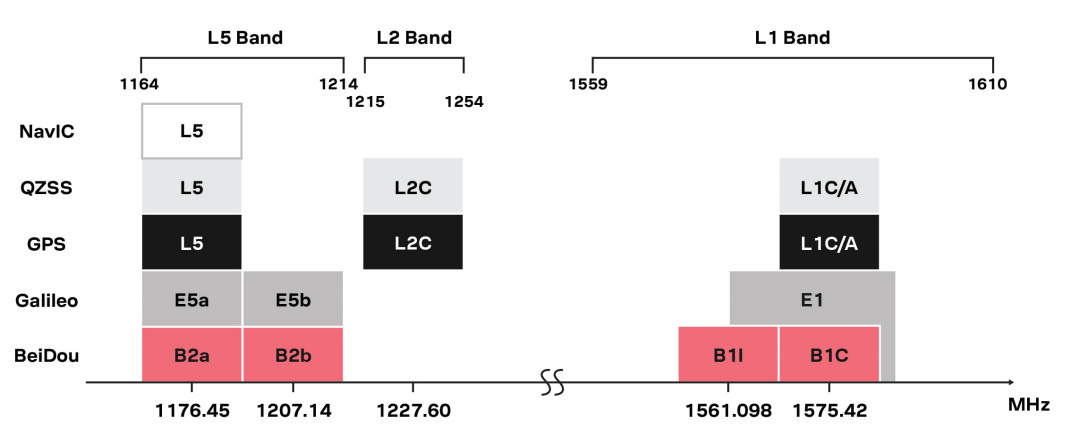In an era where digital navigation underpins global aviation, maritime, and even terrestrial logistics, the integrity of Global Positioning System (GPS) signals has become mission-critical. However, an alarming rise in GPS interference incidents — including jamming and spoofing — has emerged as a formidable threat to safety, security, and operational efficiency. From commercial airliners rerouting flights to cargo ships drifting off course, the implications are both real and far-reaching.
This article delves into the technical mechanics of GPS interference, its growing global footprint, and the countermeasures and counter-countermeasures in place to protect critical infrastructure.
What Is GPS Interference?
GPS interference manifests primarily in two forms: jamming and spoofing. Both disrupt GPS receivers’ ability to interpret satellite signals accurately, but they do so through different mechanisms.
GPS Jamming
Jamming involves the transmission of high-power radio frequency (RF) signals in the GPS spectrum to overwhelm the legitimate satellite signals, which are inherently weak by the time they reach Earth (typically -125 dBm). A GPS jammer transmits noise or false data on the same L1 or L2 bands used by GPS satellites, effectively "drowning out" the genuine signal. The result: GPS receivers cannot calculate position, time, or velocity, rendering them useless.
Jammers are relatively inexpensive and easy to deploy, making them attractive tools for adversaries, criminals, or even individuals seeking to mask their location.
GPS Spoofing
Spoofing, on the other hand, is more sophisticated. Instead of just overpowering the GPS signal, a spoofer mimics legitimate GPS signals, feeding false positional or timing information to the receiver. Unlike jamming, which causes an outage, spoofing can deceive the system into trusting incorrect data, leading to incorrect navigation decisions.
Spoofing is especially dangerous because the receiver continues to function without any obvious indication of compromise, which may lead to course deviations, unintentional entry into restricted zones, or even collisions in aviation and maritime domains.
Technical Consequences of GPS Interference
The systemic reliance on GPS across critical infrastructures amplifies the danger:
Aviation: GPS spoofing can cause altitude and position errors, leading to navigational confusion, missed approaches, or even mid-air collisions.
Maritime: Vessels using auto-pilot systems could be misled off-course, resulting in groundings, collisions, or illegal entry into territorial waters.
Road Transport: Spoofing attacks can paralyze logistics networks, disrupt emergency response times, and cause accidents in autonomous or semi-autonomous vehicles.
Military Operations: A loss of precise navigation can compromise missile guidance, troop movements, and command and control functions.
Real-World Incidents and Geographic Hotspots
Recent data highlight a sharp rise in GPS interference incidents, especially in conflict-prone zones:
Red Sea (2025): A 350% spike in spoofing incidents, with some vessels reporting location shifts of hundreds of nautical miles.
Strait of Hormuz: Multiple collisions and navigational errors have been attributed to jamming and spoofing attacks.
Russia (2017): Over 20 ships near Novorossiysk Port simultaneously showed incorrect positions, appearing at an inland airport—a textbook spoofing event.
Aviation authorities and commercial airlines now routinely avoid airspaces over active conflict zones such as Ukraine and Syria to reduce exposure to spoofing attacks.
Technical Countermeasures to GPS Interference
As GPS threats grow, so does the need for robust technical defenses. Here are the principal countermeasures used in aviation, maritime, and military sectors.
1. Inertial Navigation Systems (INS)
INS uses gyroscopes and accelerometers to track position from a known point, independent of external signals. When GPS is unavailable or compromised, INS provides continuity in navigation. Although accuracy drifts over time, it serves as a critical fallback during short-term outages.
2. VHF Omnidirectional Range (VOR) and DME
These ground-based radio navigation aids enable aircraft to calculate position based on distance and bearing from known beacons. They are immune to GPS spoofing and remain vital in contested environments.
3. Terrestrial Navigation and Radar
Ships resort to manual helm steering and coastal radar systems when spoofing is suspected. Terrestrial navigation, including the use of landmarks, lighthouses, and visual cues, is an ancient but effective method for restoring situational awareness.
4. Multi-Constellation GNSS Systems
Adopting multi-GNSS receivers enhances resilience. These systems utilize signals from:
GPS (USA),
GLONASS (Russia),
Galileo (EU),
BeiDou (China),
NavIC (India).
By triangulating position from multiple satellite networks, systems can cross-verify data and detect spoofed signals through inconsistencies.
5. Time Synchronization Systems
Critical infrastructure often uses high-precision atomic clocks or network time servers as backups. This mitigates the impact of GPS timing interference on financial transactions, grid synchronization, and telecommunications.
6. Anti-Jamming Antennas
Advanced systems use null-steering or beam-forming antennas that reject signals from known jamming directions. These are often deployed in military and high-security assets.
Conclusion
GPS interference — through jamming and spoofing — is not a futuristic cyber threat; it is a present-day reality disrupting air, sea, and land operations across the globe. Understanding the technical mechanics, recognizing its strategic implications, and building resilient systems are essential steps toward safeguarding navigation infrastructure.
As adversaries develop more sophisticated counter-countermeasures, the defense must evolve in tandem. Diversification of GNSS systems, robust crew training, and international collaboration are no longer optional — they are indispensable in defending against the invisible, yet potent threat of GPS interference.




